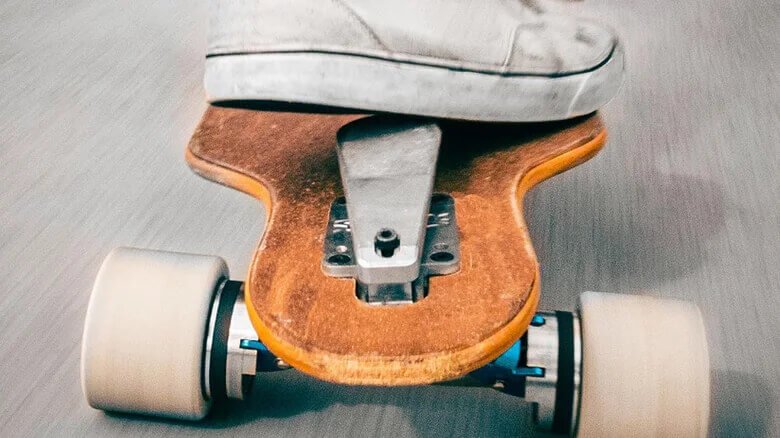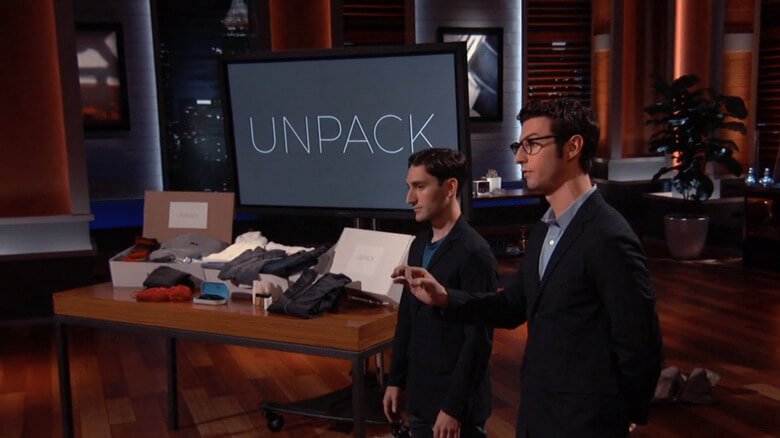Let’s shatter the biggest Shark Tank myth right out the gate — getting a deal on TV doesn’t mean anything if you can’t deliver off-screen. Lots of founders roll in, hype blazing, get a deal, then crash straight into a wall when real customers show up. So, what’s the real story with Vibe Ride and their so-called groundbreaking skateboard brakes? Let’s get into the hustle.
Contents
ToggleThe Real Brake on Skate Safety — And Why No One Bothered
Skateboarding has always been about freedom, risk, and speed. But let’s get honest — ask any boarder what scares them most, and you’ll hear the same thing: bombing downhill and realizing you can’t stop. Every parent hates that split second when a kid’s board gets away on a hill. Until Vibe Ride, nobody solved this. Sure, plenty tried tricks or drag stops, but brakes? Not on the table. There was a clear pain point, and, shocker — the cool brands ignored it, worried about image over injury.
Charlie Cannon, Carson MacDonald, and Chris Goodhue saw the gap. They didn’t just read the handwringing Reddit threads; they put cash into actually fixing it.
The Founders: More Than Weekend Warriors
A lot of Shark Tank founders treat their startup like a summer side hustle. But Vibe Ride? These guys went all-in. Charlie Cannon, especially, burned $1.2 million of his own money chasing patents and buying out the only other braking tech on the entire planet. That’s not hobbyist energy — that’s burn-the-boats commitment. He and Carson MacDonald, plus Chris Goodhue, built the business not to tinker, but to win. Anyone can pitch innovation; not everyone is willing to set their own cash on fire just to see a vision through.
That kind of risk is rare. I’ve seen founders who bet the farm and walk. But when the pain point is universal, and the solution is unique, that’s calculated risk.

Vibe Ride’s Secret Sauce: Real Patents, Real Problem Solved
Here’s why Vibe Ride’s pitch had teeth — no one else was doing it. Their breaking system? First real one built for skateboards and longboards. Patented, engineered, and actually tested where it counts: on hills where gravity wins most fights. No me too product, no drop shipped Amazon knockoff — actual innovation.
Let’s get tactical. The brakes are engineered into the trucks of the board, engaging smoothly without ruining your ride. Unlike a lot of inventions that sound cool but are an absolute mess in reality, this one actually works. The founder demo’d it live, rode down a ramp, hit the brake, and stopped on a dime. The vibe in the room went from Oh, cool show and tell to Yeah, okay, this is legit, in about three seconds flat.
No competition. Real utility. Clear defensive moat with patents. That’s how you become the name people Google when they search skateboard brakes.
Inside the Tank: How the Pitch Actually Went Down
So, Shark Tank Season 15, Episode 10. The trio steps in and asks for $250,000 for 10% equity. Good ask — not greedy, not desperate. They know what they’ve got, but they’re not inflating their value either. Frankly, a lot of founders lose deals just by being delusional on valuation. I’ve seen it go south plenty.
But then, the demo. No fancy video, just Charlie ripping down a ramp and — bang — full stop, no wipeout. The Sharks get it. You could see the wheels turning (pun intended).
Who bites? Mark Cuban. The others sit tight, probably worried about whether skateboarding is too niche or about the risk of lawsuits. But Mark? He’s always been about tech with a defensive moat — and he moves in fast, offering $250,000 for 12%. The founders take it, and just like that, the $2.08 million valuation is locked in. No haggling, no showy drama. Play smart, the deal happens quick.
Net Worth and Valuation: Reality Check
Let’s strip the Shark Tank fog away for a second. Everyone loves to throw out big numbers post-show. Here are the facts: with a $250,000 for 12% deal, the business got pegged at right over $2 million. Is this crazy money? Not really. It’s serious, but also just the baseline for what comes next. I’ve seen founders kill their own company by hanging all their hopes on a TV valuation, then ignoring operations, marketing, or scaling realities.
The truth is, a $2 million valuation for a true-first product, especially one with patented IP, is either a screaming bargain or a slow burn, depending on how execution goes. Vibe Ride’s worth didn’t boom because of the episode — it all rides (pun intended) on what they pull off post-show.

The Shark Tank Effect: How Life Changed After the Cameras
Here’s where most founders trip — they think the Shark Tank air date equals payday. It doesn’t, unless your site survives the Shark Tank effect, you actually convert visitors, and you have fulfillment dialed in. Most can’t.
Vibe Ride saw a serious bump in traffic and awareness when the episode aired. Their site orders increased, and suddenly, skate parents, teens, and even skate parks started noticing. But the real gain? Mark Cuban’s name. Every pitch deck, every partnership, every Google search now has Cuban’s stamp. That opens doors you couldn’t buy with money alone.
Are they BatDad or Scrub Daddy overnight? No. They’re moving units, grabbing attention, and, more importantly, building legitimacy in a market that desperately needs to take safety seriously.
How Vibe Ride Actually Makes Money
Let’s talk about business models. This isn’t a shark bar or single-use product fad. Vibe Ride products are sold directly from their website, not through big box shelves—well played, given niche appeal and higher margins.
They’re selling entire boards (skateboards and longboards) but, more importantly, their braking system itself. That gives them two bites of the apple: straight-to-consumer for parents and teens, and potentially wholesale or licensing to board makers savvy enough to evolve. Digital-first keeps costs tight, outreach broad, and allows for future iterations to drop quickly.
Plus, they’ve flicked the affiliate marketing switch. Anyone from gear review sites to YouTubers can earn commission sending buyers to Vibe Ride. I won’t call it a Bombas move, but it’s the right play if you want word of mouth in a street sport.
Scaling or Stalling: Where Does Vibe Ride Go From Here?
Now, here’s the uncomfortable question most skate brands dodge: can you take a safety tool and make it cool? That’s what decides if Vibe Ride blows up or stays a niche play.
Mark Cuban’s investment gives credibility and access to distribution partnerships and mass e-commerce. If they stay laser-focused on making brakes feel normal — not a nerd add-on — you’ll see Vibe Ride hit every skate park, possibly getting snapped up as a standard feature for major board brands.
Risks? Sure. DIY skaters are a tough crowd. The culture is slow to adopt anything that feels uncool or over-engineered. If Vibe Ride stalls here, they’ll settle as a nice little DTC business, serving parents who care more about scraped knees than street cred. But if they reach the influencers, the pro skaters, the viral moments on Instagram and TikTok? Then we’re talking about a player that could dominate the space.
Why Is Vibe Ride Worth Watching?
Here’s my hot take, having seen hundreds of Shark Tank founders come and go — most just build hype. Vibe Ride brought patents, a real need, and personal risk that you don’t fake. Add in smart product engineering and a partner like Mark Cuban? The table’s set for something big.
But I’ll tell you straight: the founders still have to fight for every sale. No Shark or show magic fixes the grind. Watch this brand if you want to see what sweat, smart product, and a little TV stardust can do — or not do — for a business trying to skate uphill.
Don’t chase every shiny pitch. Chase the pain point, solve it better than anyone, and don’t stop hustling. That’s the real play.
FAQ: Vibe Ride Shark Tank Questions
1. Is Vibe Ride Still in Business After Shark Tank?
Yes. Vibe Ride is still operational, moving product online, and benefiting from the Shark Tank buzz.
2. Where Can I Buy Vibe Ride Boards or Braking Systems?
They sell direct from their website, prioritizing online sales for both their complete boards and separate braking systems.
3. Did All Sharks Want In or Just Mark Cuban?
Only Mark Cuban made an offer and closed the deal. The rest passed, likely not seeing the scale or fearing the niche.
4. How Much Did Charlie Cannon Personally Invest?
Charlie put in around $1.2 million of his own money before Shark Tank. That bought the patents and launched the company.
5. Are There Any Similar Products Competing with Vibe Ride?
Nope. With real patents and buying out the previous competitor, Vibe Ride stands alone in the skateboard braking space.
6. How Do the Brakes Actually Work and Are They Safe?
The braking system is engineered into the trucks and allows for smooth stopping without jamming up. Safety was a key design feature.
7. What Is Vibe Ride’s Net Worth Now?
Post-Shark Tank, their valuation sits around $2 million based on the Mark Cuban deal, but true net worth depends on post-show traction.
8. Did the Shark Tank Deal Actually Close?
Yep, at $250,000 for 12% equity. Mark Cuban is all in, and now the hustle continues.
For a full breakdown of Shark Tank business winners, check out more profiles and deep dives on SharkWorth. That’s where you see which brands stayed afloat — and which ran out of ride.










